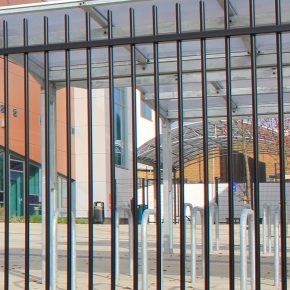
GUEST ARTICLE: Creating a secure learning environment
This guest article sees Peter Jackson, MD Jacksons Fencing, look at fencing in schools and how it could prove to be dangerous.
Children in the UK have finally returned to school following months of being mostly housebound without interaction with their peer groups. How long this will continue is anyone’s guess, as the threat of a second lockdown looms near. However, the safety of children during this time of heightened anxiety, particularly in their learning environments, remains paramount.
Providing adequate physical security is an essential requirement for any school, so decision-makers should seek guidance from reliable security solutions providers when embarking on any refurbishment process.
Importantly, these providers must possess a good knowledge of security standards from third-party bodies. However, when we commissioned an investigation into school security, which nationally surveyed teachers, architects and parents, we found less than half the architects (47%) were familiar with leading standards such as the Loss Prevention Certification Board’s (LPCB) LPS 1175. A certified LPS 1175 Security Rating is only achieved when a fence is physically tested to a standard which stipulates the allowable toolset and minimum attack time at each level.
This is alarming, especially when 84% of architects listed performance as a priority. Furthermore, only one-third of architects see both LPS 1175 and the UK police initiative Secured by Design (SBD) standards specified for schools.
This highlights a lost opportunity for them when trying to propose solutions appropriate to the level of risk and needs of the school.
Alongside commissioning professionals who have a good understanding of security standards, head teachers should also look for architects who are willing to adopt an advisory role, helping school leaders identify what they need.
For example, our research highlighted a significant percentage of teachers reporting issues with their existing school perimeter and gates. Flagging problems such as perimeter fencing being climbed over (28%) and causing injury, and gates not locking correctly (10%).
This is all the more prescient as our research discovered, during school perimeter refurbishments, 71% of architects were instructed to repeat the existing specification, rather than adjusting to meet the evolving risks.
This highlights a need for headteachers to prioritise solutions appropriate to their site’s specific needs. In many cases, this will mean changing the existing specification.
With the role of schools changing and increasingly becoming more integral to local communities, particularly in this time of uncertainty, access will be an ongoing issue.
The specification of different types of perimeters and entry systems needs to be carefully considered. Head teachers, architects and parents all need to come to a consensus to strike the right balance between known fears about unwanted persons gaining access, and ensuring children keep within the school grounds.
It was made clear by our research that there is still more to be done to ensure security measures deliver what they are put in place to do, both aesthetically and on a functional level.
Improving the understanding of security standards and knowledge of certified products available will only have a positive outcome. Our schools, students and teachers deserve adequate protection. It’s up to us all to work together to ensure it happens.
Latest news

22nd November 2024
Insight Data: Using Marketing Data to Build a Successful Business in 2025
Alex Tremlett, Insight Data’s Commercial Director, discusses the challenges for construction firms in 2025 and shares six strategies for success…
Posted in Articles, Building Industry News, Building Services, Information Technology, news, Research & Materials Testing
22nd November 2024
Purplex: A tough Budget, but opportunity still knocks
Incoming governments, especially those with significant mandates, inevitably come into power on a tidal wave of optimism coupled with hope that ‘Things can only get better’. Andrew Scott, MD of construction-focused, full-service agency Purplex, talks…
Posted in Articles, Building Industry News, Building Services, Information Technology, news, Posts, Research & Materials Testing
22nd November 2024
Pop Up Power Supplies Gets Arty in Yorkshire
Pop Up Power Supplies has installed 13 new electricity units at The Hepworth Wakefield – read more in this article…
Posted in Articles, Building Industry News, Building Products & Structures, Building Services, Case Studies, Civil Engineering, Facility Management & Building Services, Garden, Hard Landscaping & Walkways, Landscaping, Posts, Restoration & Refurbishment, Retrofit & Renovation
22nd November 2024
OPT Services Revolutionises Fibre Cable Capping with Eco-Friendly Innovation
UK-based OPT Services has unveiled SlimLine™ Capping, a groundbreaking fibre cable protection solution that promises to deliver significant environmental and installation advantages to the fibre optic industry.
Posted in Articles, Building Industry News, Building Products & Structures, Building Services, Facility Management & Building Services, Information Technology, Innovations & New Products, Sustainability & Energy Efficiency
 Sign up:
Sign up: